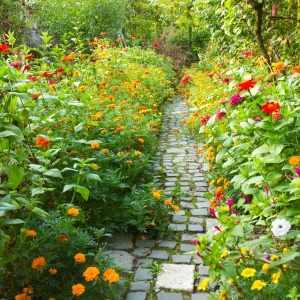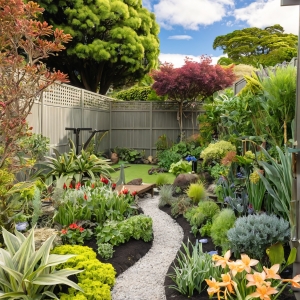It’s officially spring! Have you started your garden clean-up and planting yet? Here are some gardening tips to help you get started:
1. Inspect Your Backyard: Begin by assessing any damage caused by the cold, stormy winter weather. Check your vegetable patch, flower beds, and landscaping, paying special attention to trees that might have suffered damage. Older and younger trees are particularly vulnerable. If you’re unsure about a tree’s health, consider consulting a professional arborist.
2. Focus on Landscaping First: Prioritize fixing your landscaping, especially retaining walls and fencing. Once that’s done, move on to other areas like gutters, pathways, and planting beds.
3. Clean and Sharpen Your Gardening Tools: Before diving into planting and cleanup, ensure your tools are in good shape. Clean them with hot water, and oil your trimmers. Well-maintained tools are not only easier to use but also less likely to damage your plants.
4. Create a Composting Area: If you haven’t already, designate an area for composting. The waste from your backyard cleanup makes an excellent base for compost.
5. Start with Tree Pruning and Hedge Trimming: Give your overgrown trees and hedges a trim to bring them back into shape. If they’re too large, consider hiring a professional arborist. This is also a good time to remove any tree stumps that may have softened due to wet weather, making removal easier.
6. Clean Up Flower Beds and Vegetable Gardens: Before planting, clear out any debris and unwanted weeds from your flower beds and vegetable garden. This cleanup is essential for ensuring that your plants have access to the nutrients they need.
7. Prepare the Soil: Get the soil ready for new plants, vegetables, and trees by adding compost, well-seasoned manure, or slow-release nutrients. Also, prepare pots with fresh potting soil before you start planting.
8. Start Planting: Plan where you want each plant or tree to go, considering their specific needs for sunlight, shade, and drainage. Seek advice from local gardeners or garden stores to ensure you choose plants that are well-suited to your area. For large-scale landscaping, including tree planting, it may be wise to get professional help to avoid long-term issues like trees growing too close to power lines or structures.
9. Apply Mulch: Once planting is complete, apply mulch to slow down weed growth and prevent water evaporation and nutrient loss from the soil, especially as the weather gets warmer.
10. Clean and Freshen Outdoor Furniture: With everything in place, don’t forget to clean and refresh your outdoor furniture so you can fully enjoy your beautiful garden.






















